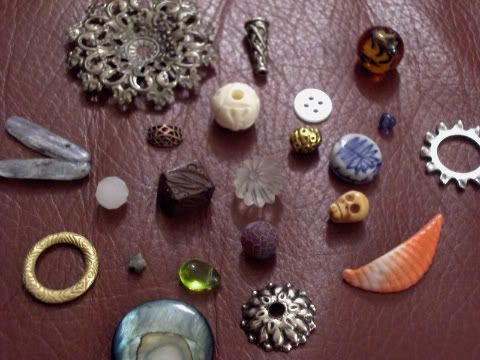In beading, there are hundreds of ways to add texture to a piece! Beads come in a variety of shapes and textures. There are faceted beads, stick beads, square and star shaped beads, beads with a carved surface, beads created out of rolls of paper or wire wrapped around an object, some with raised surfaces, etc. etc. etc. Endless! But beads can also have implied or visual texture. Think of beads with beautiful swirls in the glass, or mother-of-pearl beads with ripples of iridescent glow on an otherwise flat plane, or fire-polished agates, with their smooth yet crackled surface.

Sometimes it's the beads you pair together that create the texture. Square beads with spears of different kinds of stone will create an earthy, almost primitive-feeling effect. Round beads paired with ornate bead caps can add a very elegant texture to an otherwise plain pearl necklace. Fun shaped spacers can spruce up any piece! Even playing with size, pairing up very large round beads with really small ones, or entwining different sized chain together, can alter texture in a plethora of delightful ways.
So, the next time you're sitting down to design, let texture be a conscious part of your considerations. You won't be sorry! :)
----- ----- -----

No comments:
Post a Comment